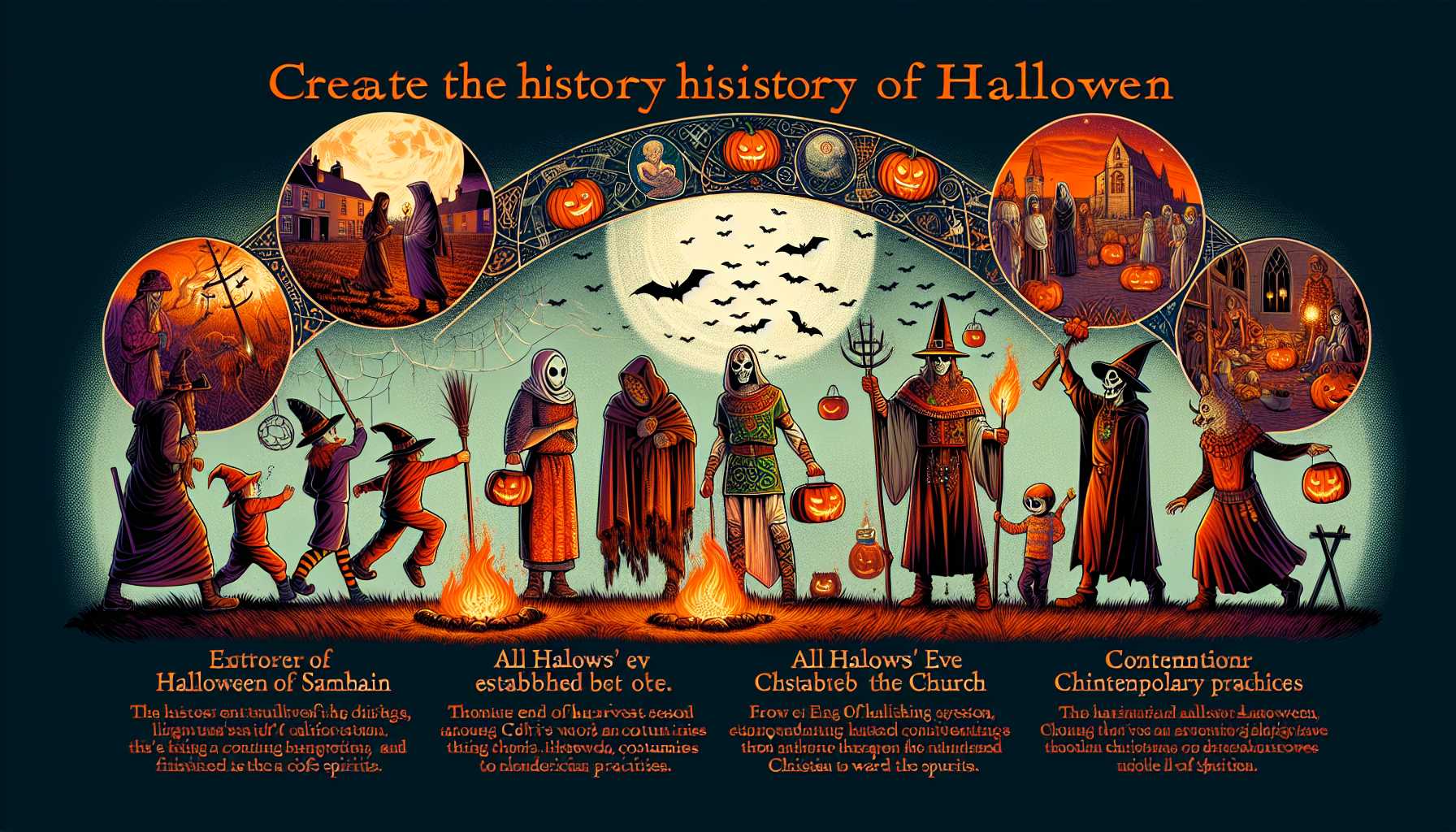
The Evolution of Halloween From Ancient Samhain to Modern Celebration
The article on the history of Halloween outlines the holiday's origins, tracing it back to the ancient Celtic festival of Samhain, celebrated around November 1st.
halloin-ui yeogsa-e daehan gisaneun i chukje-ga godeu kelteu-ui saemhain chukjejeulo geoseul-eul ollaganeun giwon-ui gaeyoreul seolmyeonghamnida.
할로윈의 역사에 대한 기사는 이 축제가 고대 켈트의 샘하인 축제로 거슬러 올라가는 기원의 개요를 설명합니다.
Samhain marked the end of the harvest season and the onset of winter, a time believed to blur the line between the living and the dead.
saemhain-eun suhwaek siseun-ui kkeut-gwa gyeoul-eui sijag-eul natanamyeo, ineun san ja-wa jug-eun ja sai-ui gyeonggye-ga heuryeojineun sigi-ro yeogyeojyeossseubnida.
샘하인은 수확 시즌의 끝과 겨울의 시작을 나타내며, 이는 산 자와 죽은 자 사이의 경계가 흐려지는 시기로 여겨졌습니다.
Celts lit bonfires and wore costumes to ward off roaming spirits, as they believed the souls of the deceased returned on this night.
kelteujok-eun bul-eul piugo uisang-eul ib-eo tteodoneun yeonghon-eul jjachanaessseubnida. geudeul-eun jug-eun ja-ui yeonghon-i i bam-e dol-aondago mideossseubnida.
켈트족은 불을 피우고 의상을 입어 떠도는 영혼을 쫓아냈습니다. 그들은 죽은 자의 영혼이 이 밤에 돌아온다고 믿었습니다.
With the spread of Christianity, the church established All Hallows' Eve on October 31st, the night before All Saints' Day, to replace pagan customs with Christian practices.
gidoggyo-ui hwaksan-gwa hamkke gyohoe-neun 10wol 31il-e manseughalloin-ui bam, jeug modeun seong-in-ui nal jeonnal-e igyodo gwansub-eul gidoggyo gwansub-eulo daechaeghagi wihan i nal-eul seoljeonghaessseubnida.
기독교의 확산과 함께 교회는 10월 31일에 만삭할로윈의 밤, 즉 모든 성인의 날 전날에 이교도 관습을 기독교 관습으로 대체하기 위해 이 날을 설정했습니다.
Over centuries, this celebration evolved into what we now know as Halloween, incorporating various cultural elements.
susengil-eul geochimyeonseo i chukje-neun uriga hyeonjae algo issneun halloin-euro baljeonhayeo dayanghan munhwa-jeog yoso-reul tonghabhaessseubnida.
수세기를 거치면서 이 축제는 우리가 현재 알고 있는 할로윈으로 발전하여 다양한 문화적 요소를 통합했습니다.
By the 19th century, Irish immigrants brought the tradition to America, where it became increasingly popular and commercialized.
19segikkaji aイル랜드 iminja-deul-i i jeontong-eul migug-euro gajyeo-onmyeonseo jeomjeom deo in-gil-eul kkeulgo sang-eobhwahaji-ssseubnida.
19세기까지 아일랜드 이민자들이 이 전통을 미국으로 가져오면서 점점 더 인기를 끌고 상업화되었습니다.
Today, Halloween is characterized by costumes, trick-or-treating, and festive decorations, diverging from its somber origins to a more playful and community-centered celebration.
oneulnal halloin-eun uisang, teulrik-or-teuliting, geuligo chukje jangsig-euro teugjing ji-eojimyeo, geu geunbonjeogin giwon-eseo deo uhuijeog-igo gongdongche jungsim-ui chukje-ro byeonmohaessseubnida.
오늘날 할로윈은 의상, 트릭-or-트리팅, 그리고 축제 장식으로 특징 지어지며, 그 근본적인 기원에서 더욱 유희적이고 공동체 중심의 축제로 변모했습니다.
The article emphasizes the transformation of Halloween through cultural exchanges and its evolution into a widely celebrated holiday that combines elements of ancient rituals and modern festivities.
i gisa-neun munhwa gyoryu-reul tonghae halloin-ui byeonhwa-wa godeu uisik-gwa hyeondae chukje-reul gyeolhabhan neolri chughabaneun hyuil-lo-ui baljeon-eul gangjohamnida.
이 기사는 문화 교류를 통해 할로윈의 변화와 고대 의식과 현대 축제를 결합한 널리 축하받는 휴일로의 발전을 강조합니다.
Based on this article
